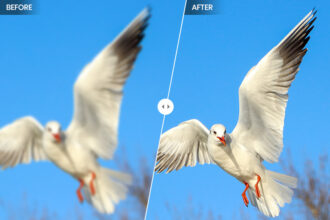Driving through mountainous terrain feels effortless in a well-balanced Audi. The power delivery, the cabin’s comfort, the sense that everything has been engineered to handle the climb. But behind that smooth performance, mechanical strain — particularly on the automatic gearbox. Experts from LLLparts say that during long ascents, especially in hotter regions or summer conditions, that system faces more stress than most drivers realise.
Climbing puts the gearbox under consistent torque demand. Combine that with thinner air, limited airflow, and higher temperatures, and the transmission fluid rises in temperature — sometimes faster than the cooling system can keep up with. That’s where the trouble starts.
What Happens When Heat Builds Up
Automatic gearboxes don’t respond to heat well. In Audi models, the system is calibrated to protect itself but can only do so much. As internal temperatures increase, fluid begins to thin, pressure modulation becomes less precise, and gear changes lose their crispness. The shifts take longer. The timing isn’t as sharp. Sometimes, it’s barely noticeable — until you’re halfway through a descent, and the downshift doesn’t arrive quite when it should.
According to experts at LLLparts, what feels like a minor delay can be an early indicator of thermal fatigue in the system. The clutches don’t engage as cleanly. Sensors begin to misread pressure thresholds. Over time, this doesn’t just impact drive quality — it increases wear on core transmission components.
Why Mountain Driving Accelerates Wear
Mountain roads force the gearbox to adapt constantly: upshifting to maintain momentum and downshifting for engine braking. When done in cooler weather, the gearbox can regulate itself. But the system doesn’t get the same break in hot weather, especially under continuous load. Cooling efficiency drops. Oil degrades faster. LLLparts professionals often see signs of early wear in vehicles that have spent time in alpine regions — even when mileage appears moderate. The issue isn’t just kilometres driven. It’s how those kilometres are driven and under what conditions. Preventive care matters far more than reacting to failure once it appears.
https://unsplash.com/photos/white-bmw-m-3-coupe-on-road-during-daytime-5q1xp_kresk
Avoiding Long-Term Gearbox Damage
Transmission fatigue doesn’t always announce itself clearly. There’s no dashboard alert for “fluid slightly overheated three trips in a row.” But the effect accumulates — significantly if the fluid hasn’t been changed on time or if internal filters are partially blocked. That’s why, after extended mountain travel, inspecting fluid condition isn’t optional. It’s necessary.
Specialists at LLLparts recommend treating mountain trips like a track day: hard-driving under abnormal stress. That means shorter fluid intervals and component checks. If shifting begins to feel irregular — even slightly — it may be time to replace worn solenoids, cooling lines, or pressure regulators using certified Audi parts. Components that function well under normal use often underperform when heat cycles intensify.
Drive Confidence Requires Mechanical Consistency
Audi’s automatic gearboxes are precise but rely on thermal stability to stay that way. That balance can slip faster than expected once road conditions begin to climb. Uphill travel, tight curves, warm weather — it all adds up. And while the car may seem composed from the outside, internal systems work harder than most drivers realise.

















